MIP & PMI: What is Mortgage Insurance?
By
If you’re not quite sure what mortgage insurance is, you’re not alone. If you’ve taken out a conventional loan, you will have to pay private mortgage insurance, or PMI—while if you take out an FHA loan, you’ll have to pay a mortgage insurance premium, or MIP. Read on for a primer on mortgage insurance.
Private Mortgage Insurance (PMI)
Loan qualifications from Fannie and Freddie for conventional loans, a person who takes out a conventional mortgage to purchase a home is required to pay private mortgage insurance, or PMI, when paying less then 20% down on the purchase of their new home. This PMI is paid directly by the borrower, but it does have value to the lender, as it protects against financial losses in the event that the borrower can no longer pay his or her mortgage.
So why is a PMI required? The lender from which you obtain your loan views the down payment on your mortgage as proof that you will be able to take on the monthly mortgage payment on your new home. If you pay less than 20%, the lender will require further proof that you’ll have the means to pay off the loan. The insurance adds to the confidence of the lender by acting much in the same way a car or health insurance plan: if you can’t pay your loan, the insurance will pick up the balance of that loan and minimize the lender’s loss. A down payment of 20% or more is taken as proof enough that you will be able to take on the mortgage payments.
PMI is usually about .5% of the amount of the mortgage loan. This means that if you purchased a home for $300,000 and put 10% down ($30,000), your PMI on the remaining financed $270,000 would cost about $1,350 per year. Divide that by 12 for each of the months in a year, and you’re looking at an extra $112.50 on each monthly mortgage payment in that particular situation.
If you have a conventional loan, you can call your lender once you reach 20% equity in your home and have the PMI canceled from your mortgage loan. If you forget to call, rest assured that the Homeowners Protection Act of 1998 requires the lender to drop the PMI once the homeowner reaches 22% equity on their loan.
Mortgage Insurance Premium (MIP)
Some homebuyers choose loans backed by the Federal Housing Administration, of FHA, instead of a conventional loan. FHA loans require less money as a down payment than do most conventional loans, making them attractive for some homebuyers. This is a direct benefit to an FHA loan. However, all FHA borrowers must pay a mortgage insurance premium, or MIP, to ensure the lender that they are capable of paying the monthly mortgage payments for the life of the loan. Everyone who takes out an FHA loan must pay MIPs. There is no getting around it.
Considerations
In most cases, if you can afford the 20% down on your home, it’s best to go ahead and do it. You’ll save yourself money not only monthly, but over the life of the loan as well. However, the main concern is to be able to afford your monthly mortgage payments, whether or not they include PMI or MIPs.
Mortgage insurance premiums may also work in your favor during tax season, so if you find that you must take out a mortgage with a PMI or MIP, all is certainly not lost. Many of these costs can be used to offset your tax liability.
To learn more about mortgage insurance, call one of NLC Loans™’ personal mortgage advisors toll-free at 877-480-8050 or request a free mortgage consultation here.
RELATED: Obama to reduce MIP rates on FHA loans beginning January, 2015














 newsletter no longer available
newsletter no longer available